1. サマリー:沈黙は黄金、問いは羅針盤
子どもが「これなに?」「どうやるの?」と尋ねた瞬間、親は答えを提示したくなります。しかし“正解”を即座に与えるほど、思考の芽は摘まれがちです。本記事では、幼児教育の研究知見と保育現場の実践を踏まえ、あえて答えずに子どもの思考回路を活性化する質問テクニックを解説します。焦点は①オープンエンドの問い②“待つ力”=ウェイトタイム③リフレクティブ・リスニング④ミスを歓迎する環境⑤探究を習慣化する家庭デザインの5点。記事の終盤では、忙しい保護者がすぐ始められる3ステップと、失敗しないコツを“まとめ”で提案します。読了後には、沈黙が怖くなくなり、子どもの「考えるエンジン」を自走させる伴走者になれるはずです。
2. オープンエンド質問で“思考の扉”を開ける
「○○は何色?」のようなクローズド質問は、答えが1つで会話が途切れがち。一方「もし○○が透明だったら?」のようなオープンエンド質問は、答えが複数あり発想を促進します。幼児教育学では“思考の幅”を広げる最初の鍵とされ、Bloomのタキソノミーでは上位の“応用・分析・評価”領域を刺激すると説明されます。たとえば積み木遊び中に「どうすれば倒れないタワーになるかな?」と聞くだけで、重心・バランス・素材といった概念へ子ども自らアプローチします。専門用語:オープンエンド質問=答えを複数想定し、自由な表現を促す問い。家庭では「もし」「どんな」「どうして」を文頭に置く習慣をつけると、自然にオープンエンド型へ移行できます。
3. “ウェイトタイム”―沈黙が生む深い思考
子どもが沈黙すると「早く答えて」と急かしたくなりますが、教育心理学者メアリー・バッド・ロウ(Rowe)は3秒以上沈黙を待つことで発話の量と質が向上することを示しました。これが“ウェイトタイム”。脳は沈黙の間に情報を整理し、新しい結論を生成します。親は視線を合わせ穏やかに頷くだけで十分。待つこと自体が「君の考えを尊重している」という非言語メッセージとなり、自己肯定感も高まります。難しい場面では、時計の秒針を一緒に見る「サイレントカウント方式」を使えば、親子とも焦らず“考える間”を共有できます。
4. リフレクティブ・リスニングで思考を鏡映する
リフレクティブ・リスニングとは、子どもの発言を要約し返すことで思考を深める技法です。例:「車が速いのはかっこいい!」→「速いとどんな気分になるんだろう?」。反射的に褒めるのではなく、視点を1段階抽象化して返すのがコツ。これによりメタ認知(自分の考えを客観視する力)が育まれます。専門用語を避けるなら“オウム返し+一歩深掘り”と覚えておくと実践しやすいでしょう。
5. ミスを歓迎する“エラーフレンドリー”環境
誤答を怖れると発言が減り、思考実験の量も質も低下します。そこで家庭をエラーフレンドリーに整える必要があります。具体例:失敗談を夕食の話題に取り上げ「どこが良い学びだった?」と共有。“間違い=評価ダウン”の図式を“間違い=発見のチャンス”へ書き換えると、子どもは大胆な仮説を立てやすくなります。教育工学では**失敗駆動学習(Learning from Errors)**と呼ばれ、創造的問題解決の礎になるとされています。
6. 家庭で続ける“探究ルーティン”の設計
探究を単発で終わらせず、ルーティン化する仕掛けが継続の鍵です。
- 質問ジャー:紙に書いた疑問を瓶にストックし、週末に一緒に調査
- シンクピアウォーク:散歩しながら目についた事象を1つ選び、家で研究
- 三色ペン思考法:赤=疑問、青=わかったこと、緑=次の仮説をノートに色分け
10分で完結する活動を「毎日同じ時間帯」に設定すると、脳は“期待値”をセットし、自発的に疑問を生成するモードへ入ります。
7. まとめ:親は“答えの提供者”から“問いの伴走者”へ
- 待ち、映し、広げる――3つのステップで子どもの思考は自走する
- 失敗を褒めることで大胆な仮説が生まれる
- 探究ルーティンを持つ家庭は、学びの火が絶えない
今日から「すぐ答えを言わない」勇気を持ち、沈黙と問いを味方につけてください。子どもはやがて、わからないことにワクワクし、自ら学びの道を切り拓く“思考の冒険者”へと成長していきます。
Don’t Give the Answer! Questioning Techniques that Nurture Children’s Independent Thinking
1. Summary: Silence Is Golden, Questions Are the Compass
When a child asks “What’s this?” or “How do I do that?”, parents naturally want to supply the answer. Yet the quicker we hand over “the right answer,” the more we risk trimming the sprout of thought. This post explains research-backed, field-tested techniques that activate a child’s thinking by not giving the answer: ① open-ended questioning, ② using wait time, ③ reflective listening, ④ error-friendly environments, and ⑤ routines that weave inquiry into daily life. By the end, you’ll feel comfortable with silence and ready to become a true partner in your child’s thinking journey.
2. Open-Ended Questions Unlock the Door to Thought
Closed questions—“What color is it?”—have a single answer and end quickly. Open-ended questions—“What if it were transparent?”—invite many answers and spark creativity. In Bloom’s taxonomy they reach the higher “apply-analyze-evaluate” levels. During block play, simply asking “How can we build a tower that won’t fall?” guides the child to explore weight, balance, and materials. Make a habit of starting questions with “What if,” “How,” or “Why” to shift naturally into open-ended mode.
3. Wait Time: Deep Thinking Grows in Silence
Educational psychologist Mary Budd Rowe showed that waiting three seconds or more after asking a question increases both the quantity and quality of responses. The brain uses the pause to organize information and form new conclusions. Eye contact and a calm nod are all you need; the silence itself says, “I value your thinking.” Try counting the ticks of a clock together to share the pause without pressure.
4. Reflective Listening: Holding Up a Thinking Mirror
Reflective listening feeds a child’s words back at a slightly higher level. Child: “Fast cars are cool!” Adult: “I wonder how it feels to go that fast?” This “paraphrase plus one step deeper” grows metacognition—the ability to think about thinking—without resorting to jargon.
5. Welcoming Mistakes in an Error-Friendly Environment
Fear of mistakes shrinks conversation and experimentation. Turn your home into an error-friendly zone by treating slip-ups as learning gifts. Share your own daily missteps at dinner and ask, “What was the takeaway?” Educational technology calls this learning from errors and links it to creative problem solving.
6. Designing a Routine of Inquiry at Home
Sustaining inquiry requires routine:
- Question Jar: drop written questions into a jar, research them on weekends.
- Think-Pair-Walk: pick one sight on a walk, research it at home.
- Three-Color Notes: red for questions, blue for findings, green for next hypotheses.
Short, predictable activities train the brain to generate questions automatically.
7. Conclusion: From Answer Provider to Question Companion
- Wait, reflect, expand—three steps that set thinking in motion.
- Praise mistakes to invite bold hypotheses.
- Inquiry routines keep the flame of learning alive.
Dare to hold back the answer and let silence and questions work for you. Soon your child will treat the unknown with excitement and stride forward as an “adventurer of thought.”




コメント